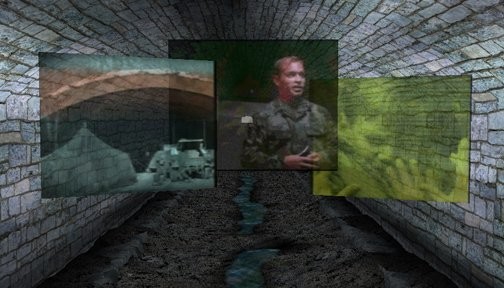
Don't let VR go wrong again!
Two recent announcements in the VR world have me shaking my head in disbelief. They don't bode well for VR and make me fear we are going to get it wrong this second time around.
The first is a seemingly wonderful announcement about a VR Art contest sponsored by Oculus and OTOY. It promises $75,000 prize money to artists who can create “most breathtaking” 360-degree stereo-panoramic submissions. http://venturebeat.com/2015/04/27/oculus-announces-a-virtual-reality-art-competition-and-two-new-hires/
Nice on the surface. Who doesn't want to stick their head in a beautiful 360 degree scene? ME! That's who. These are nice little pieces of visual candy, but they do not meet the promise of fully immersive interactive VR, where the participant has agency and can do a great deal more than just swivel their heads up down and side-to-side.
Why can't we have a call for people to make fully interactive, very creative (in terms of how the VR affordances are utilized) to create unique and original experiences? I could get behind that call. In fact, if I had an extra $75000, I'd issue that call right now. Maybe some people will take me up on this, just for their own desire to make the medium what it could be. I hope so, or we are going down the path of least resistance for this wave of VR, and that's a path that will fizzle out because it is not really new, meaningful or frankly, that interesting.
The second article is titled "Could Oculus Rift bring people back from the dead?"
I am not sure where to start on this one. First of all, it is not a single piece of hardware that can make this goal happen. Closer reading shows it is an app: "Project Elysium" that is the actual product (still in development) that will do the reuniting, but even that is described as being about 3D capture, getting your memories into a computer and more - not insubstantial technology challenges. For a more thorough description of what challenges like this entail, I point you to my paper "The Ultimate Selfie" which is a version of a keynote I gave nearly 2 years ago at a conference. https://www.academia.edu/8057545/The_Ultimate_Selfie_Musings_on_the_Future_of_our_Human_Identity
What sensational headlines like these do is create extremely unreasonable expectations for VR - the same thing that happened towards the end of the 1990s in VR's first popularization. When those promises don't pan out, then people are disappointed and things start to falter. I hope this is not going to happen to VR this time around. Certainly many people, Oculus included, are working hard on understanding how our human perceptions work to take us fully into a VR experience. Others are looking at new grammars and vocabularies for VR, and these are all excellent ways to take VR to the next level.
But I spoke with a young woman last night who said how sad it was that there were no really interesting VR experiences. I described the work of Char Davies, Brenda Laurel, Margaret Dolinsky and my own, and she was astonished, as she had never heard of any of that work. We need more stories about these amazing VR V 1.0 creators, to inspire the current crop of VR aficionados to do more and go beyond, not just take the simplest road to creating VR for today.
However, the press, and those feeding the press to make headlines for themselves are not doing VR any favors. Let's get the real stories out there, the fully immersive experiences made, and really see what VR can become, this time around.
.
Service Delivery Consultant
7yI prefer to be platform agnostic, but in this case I believe the "room-scale" capabilities of the HTC Vive could help the masses take that next step into a true VR experience. The technology is catching up to real expectations outside just a 360 photo and will spark imaginations of the those not rooted in the VR world.
Well said, totally share concerns about passive 360 viewing being called VR when it tapps only a tiny bit of what a dynamic/interactive VR experience can offer.
Author, Podcast Host & Producer, Speaker
8yIt's an old story. The press gets interested in bright, shiny objects (hardware) that can be named, photographed, catalogued and described. It's more difficult to do the same with the experiences the bright, shiny objects enable, and the emotions that result. The former requires the ability to make lists. The latter requires reportorial skills that don't come cheap. But, there's hope. Storytelling is all the rage these days, even if (especially since) most of the storytelling evangelists seem to have little idea what a story is. For my two cents. now might be time to hitch the future of VR to the new forms of storytelling that will result. Offer the $75K for the best VR STORIES or the best VR EXPERIENCES. Encourage our most imaginative writers, both established and up-and-coming, to write for VR. Forget pandering to the technology writers who want to debate how many LEDs can fit on the head of a pin. Proceed directly to the theater, film, television and book critics who just might know what a story is and the importance of creating them.
Producer/Director at MediaWerks International, LLC
8yWow, look how far 360 has come! Do you remember when we first contacted you back in the early 90's about our Toruscope project? Just ahead of our time, I guess? Just look how far we've come since then! You're right though, we can't let VR go wrong AGAIN!
Jack of all trades, master of some
8yObviously we all need to go back and re-read Chris Crawford's "The Art of Interactive Design" and figure out how we achieve major improvements in that space. Maybe I need to be getting back to my VR roots to try and stop the madness.